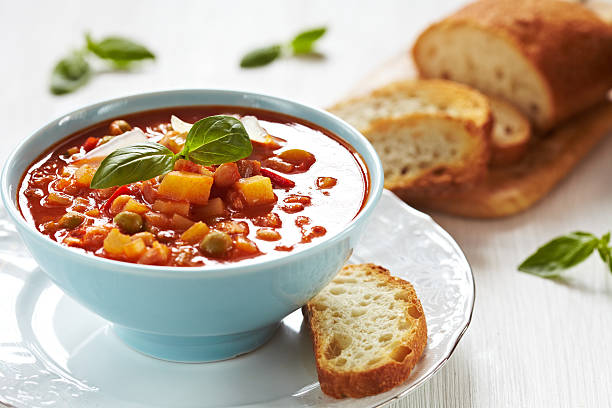The other day, I chatted to a friend while she cut up zucchini (although they will always be courgettes to me) – a dark-green variety with tiny, white speckles called nero di Milano. One by one, she held the courgettes across the palm of her left hand, close enough that the round end pressed into her yellow T-shirt. Then, using a small, barely serrated knife with a plastic handle, she lopped off the stalk before slicing the courgette first lengthways, then, holding the two halves, across so half-moons dropped straight into the frying pan.
It was cutting: nothing special, and yet it was special, personal and spare; no chopping board or surface needed, nothing to wash or wipe. We talked about this, and she laughed like a drain at how, like her dad, her aim was “as little washing up as possible”. Her dad’s daughter, she also loves great wine, cheap crisps, football and developed early-onset arthritis in her 30s – or, as she describes it, “drunk hands and creaky fingers” – which gets harder and harder to ignore with every passing year. “I always hated sharp knives anyway! Straight edges, too. And uneven pieces taste better, anyway,” she said while picking up another courgette and pressing it into her stomach. “In a few years, I’ll be using a hammer.”
I was reminded of another friend, who uses a short, stumpy knife to break off chunks of potato for his fish soup, and who swears that the pieces wouldn’t thicken the soup in the same way if they were cut neatly and had straight edges. Also of the Ukrainian chef Olia Hercules‘s theory that, when making a scramble of tomatoes and egg, the tomatoes should be crushed by hand, because it changes the flavour for the better. And then it brought to mind Grandma Roddy, decades older than my friend is now, patiently washing, peeling and then slowly cutting cubes of potato, carrot and onion with her twisted fingers in her small kitchen, finding a way to make us the tattie hash we loved as much as we loved her, and that we could smell in our hair hours later.
Braises such as this always taste better after a rest of at least an hour, and ideally a few, because the flavours settle and mix. That day, after a bottle of really nice sparkling wine and a large bag of crisps, we had our courgettes braised in tomato with half a block of feta each. The chunky moons, cut with “drunk hands and creaky fingers”, with rough edges, absorbed the sauce beautifully. So, yes, they did taste better.
Braised courgettes, tomato and onion, with garlic toast
Serves 4
6 tbsp olive oil
1 large or 2 small white onions, peeled, halved and cut into arcs
Salt
750g courgettes, cut in half lengthways and then into 3cm chunks (use a board, if needed)
750g ripe tomatoes, peeled and roughly chopped, or 2 x 400g tins chopped tomatoes
1 garlic clove, peeled
1 handful torn basil leaves
For the garlic toast
75g butter
1-2 garlic cloves, peeled and finely minced
4 slices bread
Put the oil, onion and pinch of salt in a frying panover a medium-low flame, and fry gently until the onion is soft and translucent.
Add the courgettes and cook, stirring every now and then, for about five minutes. Add the tomatoes and another pinch of salt, stir, then cover the pan.
Add the whole garlic clove and a pinch of salt, then cover and cook for 10 minutes, lifting the lid at some point to stir and check that the tomatoes are releasing their juices. Once the tomatoes are juicy, uncover and leave to simmer for 30-40 minutes, or until the courgettes are tender and the tomatoes reduced to a thick, sweet and rich sauce.
Meanwhile, mash together the butter and garlic, then, either spread it on the bread and bake in the oven, or melt in a frying pan and fry the bread.
During the final few minutes of cooking, stir in the ripped basil into the courgettes, taste and season. Serve the courgettes with the bread and a slice of salted ricotta or feta, if you want.

